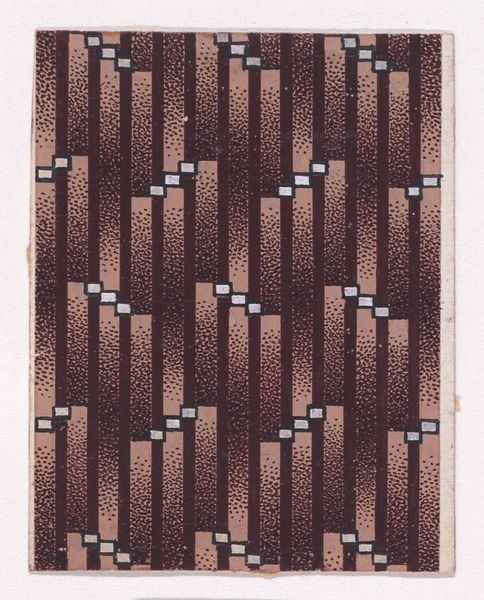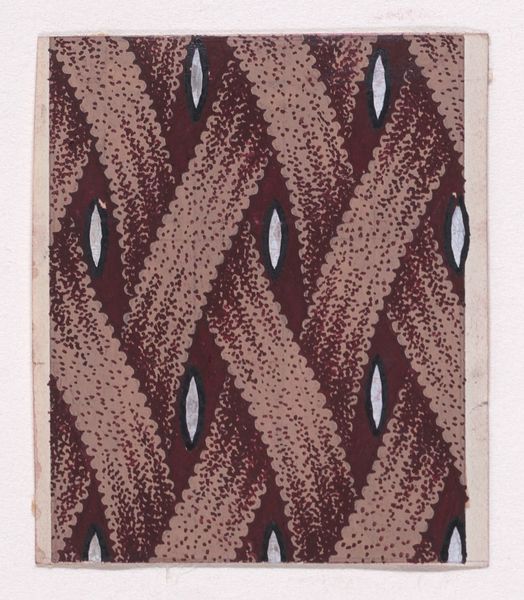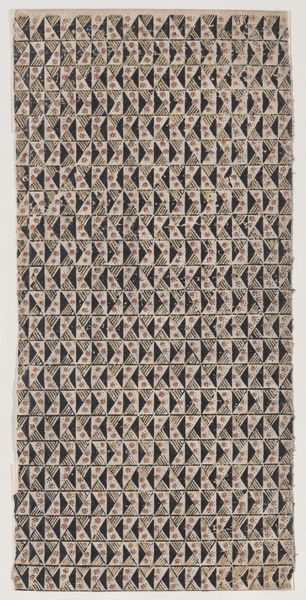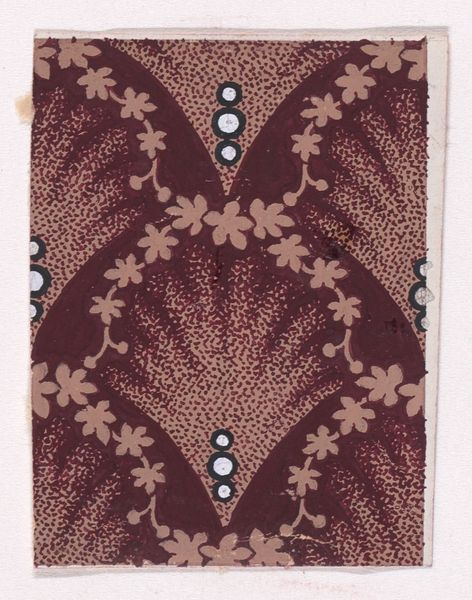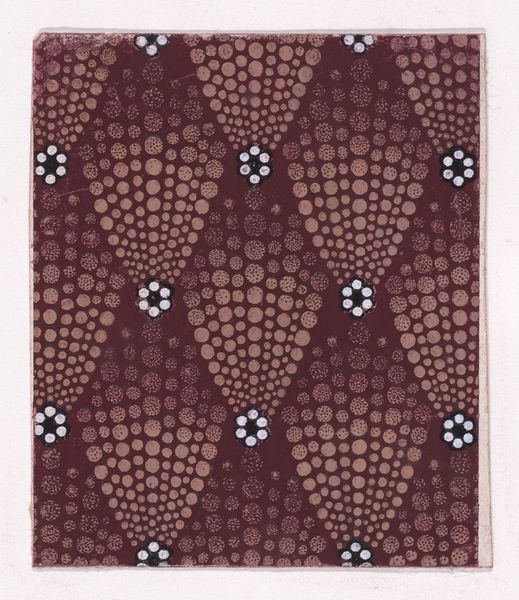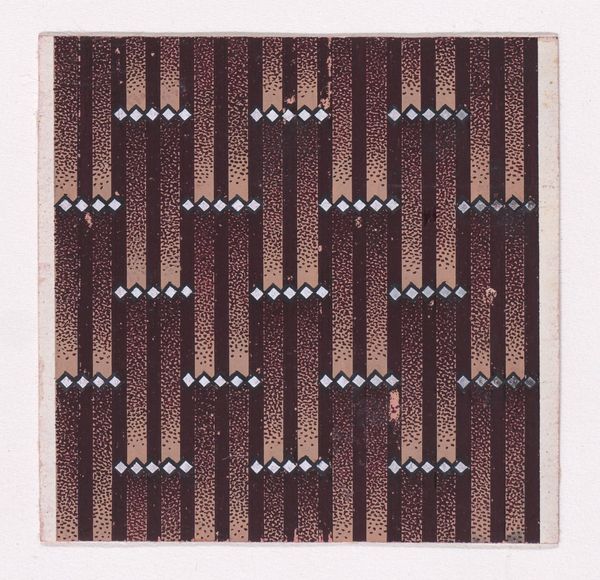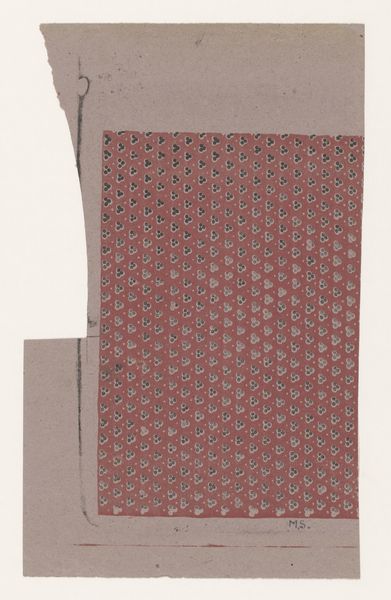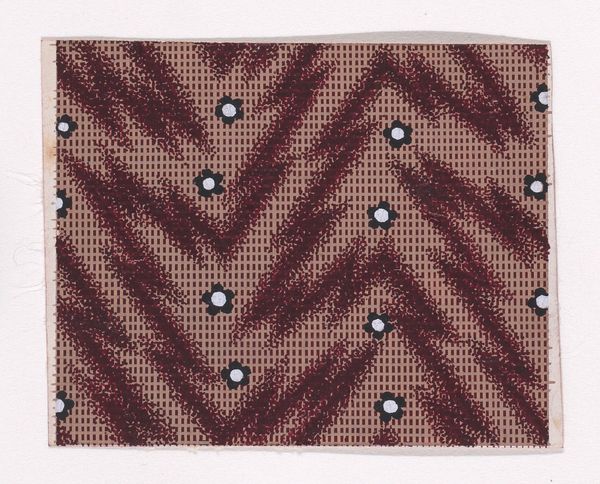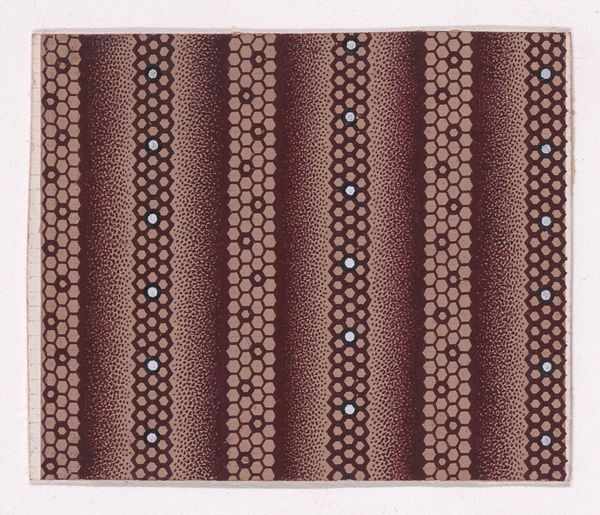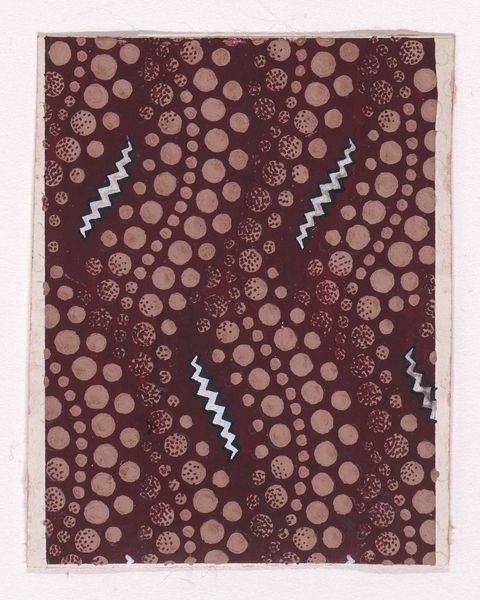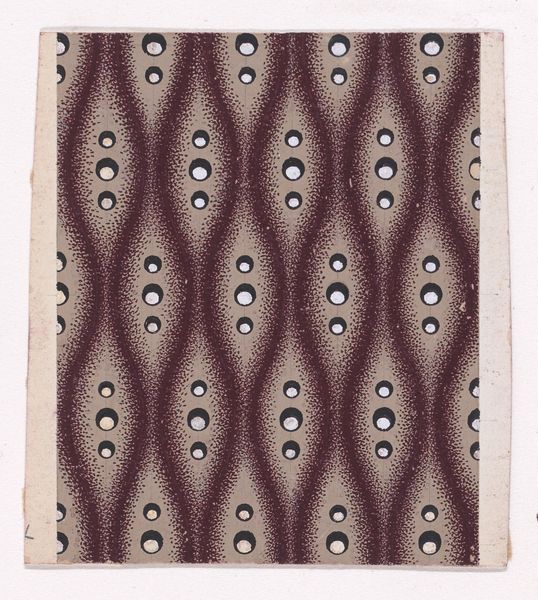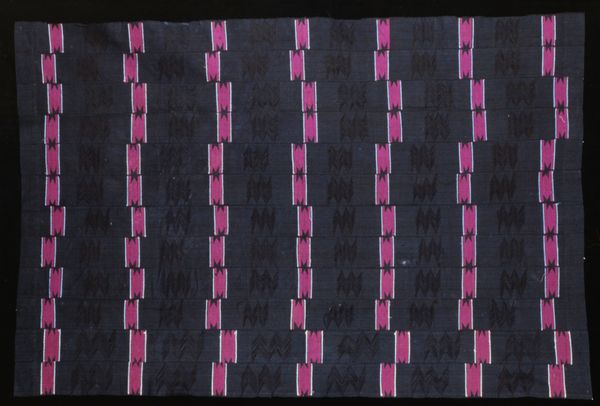
Textile Design with Alternating Horizontal Strips of Pearls over a Striped Background 1840
0:00
0:00
drawing, print, textile
#
drawing
# print
#
textile
#
geometric pattern
#
geometric
#
textile design
Dimensions: Sheet: 2 13/16 × 2 7/16 in. (7.2 × 6.2 cm)
Copyright: Public Domain
Curator: So, this textile design from 1840 features alternating horizontal strips of what appears to be pearls over a striped background. Quite intricate for its time, don’t you think? Editor: It is! What really catches my eye is the level of detail. The background stripes have a distinct texture to them. What strikes you when you look at it? Curator: I immediately consider the means of production. These patterns, especially the tiny pearls, likely involved highly specialized labor. Think about the division of labor in textile mills at the time and the conditions these artisans were subjected to. What sort of economic structures made this possible? Editor: That’s a perspective I hadn't considered! It shifts the focus from just aesthetics to the social context of its creation. How did the availability of materials shape this design, and could that be a way of dating its origin? Curator: Precisely! Access to specific dyes, printing techniques, or even the source of those pearl-like accents would influence the design's possibility and circulation. What materials are most similar in current manufacture and are they sustainable? What were the labor expectations of designers at the time versus the individuals doing the manufacturing? Were there differences in gender and what type of education did they receive? Editor: That makes me see it in a completely new light. It’s not just a pretty pattern; it’s a product of its time, reflecting the materials available, the manufacturing process, and the social inequalities inherent in textile production. This piece also makes me wonder if "high art" distinctions were made during the rise of these mass produced materials. Curator: Exactly! By examining the materiality and modes of production, we challenge the conventional boundaries of art, revealing a richer and more complex understanding of its significance. It gives me great optimism to think how these designs evolve and persist to this day!
Comments
No comments
Be the first to comment and join the conversation on the ultimate creative platform.
